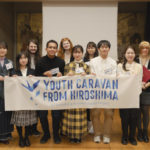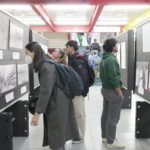Dialogue and Interaction Event at Middlebury Institute of International Studies at Monterey
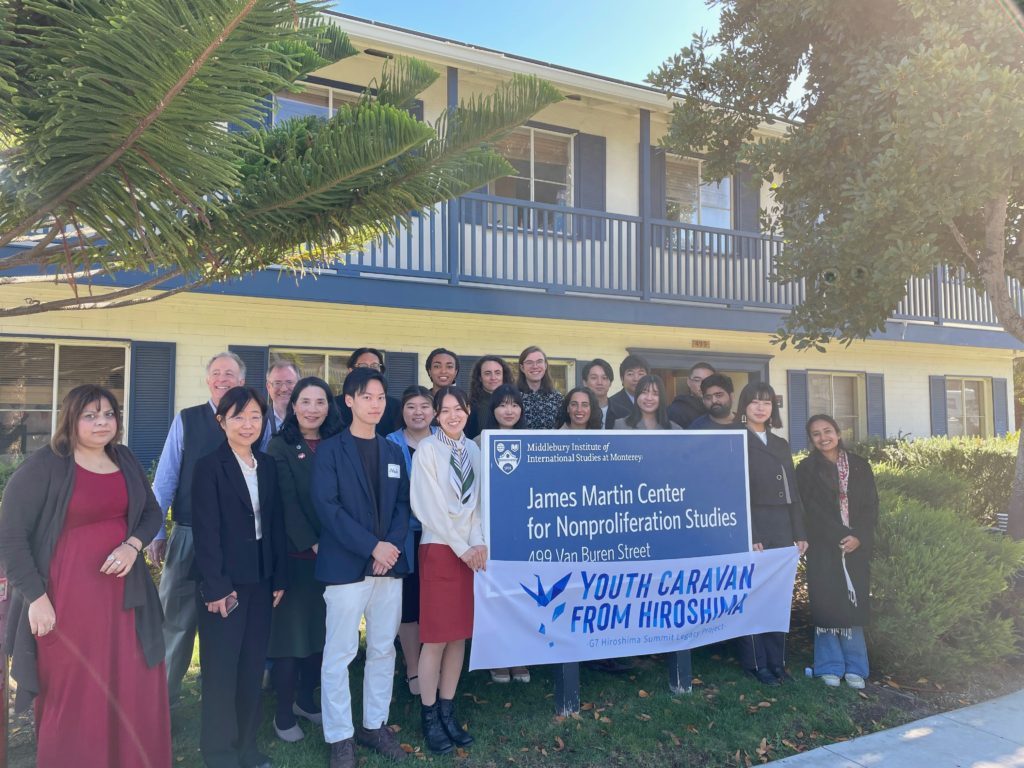
On Monday, November 13, 2023, the program participants visited the Middlebury Institute of International Studies at Monterey, California, U.S., and engaged in a dialogue and interaction event together with students majoring in weapons of mass destruction and non-proliferation.
1 . Presentations from Caravan Participants
The participants in the caravan gave presentations on the theme of the G7 Hiroshima Summit and Hiroshima’s role in nuclear disarmament.
Introduction of Hiroshima and the G7 Hiroshima Summit
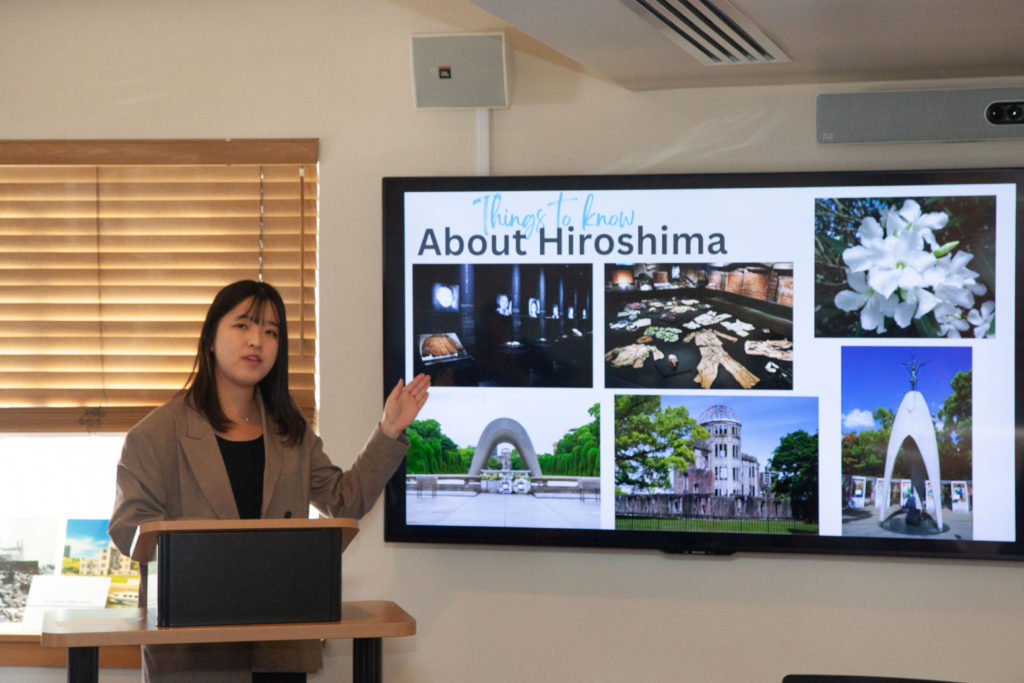
- While Hiroshima now has beautiful scenery such as Miyajima Island and delicious food such as oysters and okonomiyaki, it was the first city to be a-bombed. By the end of 1945, 140,000 people had died, with the total number of deaths due to the A-bombing by the end of 2023 reaching more than 330,000.
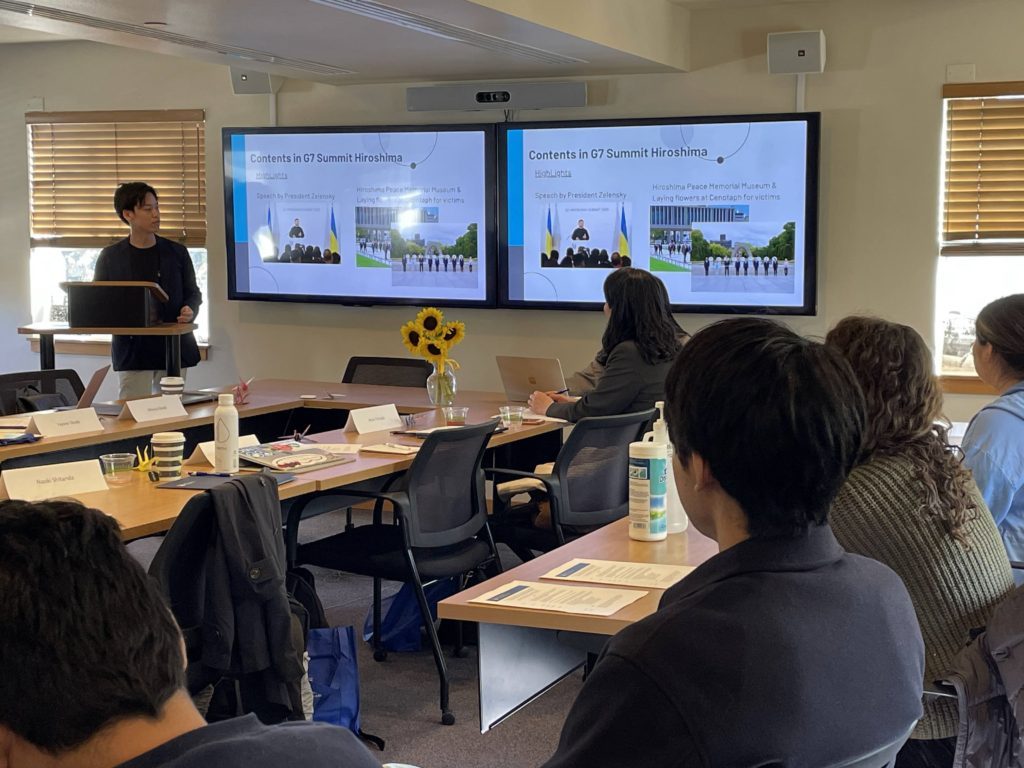
- The G7 Hiroshima Summit featured discussions on topics such as nuclear disarmament and non-proliferation, the situation in Ukraine, responses to China, and the Global South.
- President Zelenskiy of Ukraine also visited Hiroshima and gave a speech in which he stated that the current situation of Ukraine was similar to that of Hiroshima after the A-bombing and called for support from other countries, including the G7, so that the country could rebuild like Hiroshima. The G7 leaders visited the Peace Memorial Museum and offered flower wreaths at the cenotaph, which was impressive. The wreath-laying ceremony was reported in Japan many times.
- The Hiroshima Vision is the G7’s first joint document focusing on nuclear disarmament and non-proliferation. It confirms that a world without nuclear weapons is the ultimate goal that should be achieved in a “realistic, pragmatic and responsible way” (without harming safety) and that the decline in nuclear arsenals must continue. There are arguments for and against the document in that the phrase “realistic, pragmatic and responsible way” can be interpreted as affirming the theory of nuclear deterrence.
Hiroshima’s Role for Nuclear Disarmament

- Hiroshima tries to hand down the memory of the Atomic bombing to future generations through the Hiroshima Peace Memorial Museum and by sharing the testimonies of hibakusha with many people. In addition, there are peace initiatives by the youth in Hiroshima, such as a signature campaign for the abolition of nuclear weapons, the Future Leaders’ Program for Global Peace, which provides an opportunity to study nuclear disarmament and other global issues, and the Hiroshima Junior International Forum.
- To solve big, complex global issues, it is important to utilize the reality of the atomic bombing and youth initiatives.

- In Hiroshima, peace education is provided starting from elementary school, but the focus is on the damage to Hiroshima by the atomic bombing and on nuclear disarmament. Peace education with a focus on other themes is not provided until university. If Dr. Johan Galtung’s definition of peace is applied, peace education of Hiroshima can be described as education that focuses on negative peace. Hiroshima should stand on the front line of peace education, handle international issues other than Hiroshima and nuclear disarmament, and foster youth with an international perspective who can understand peace in a broader sense.
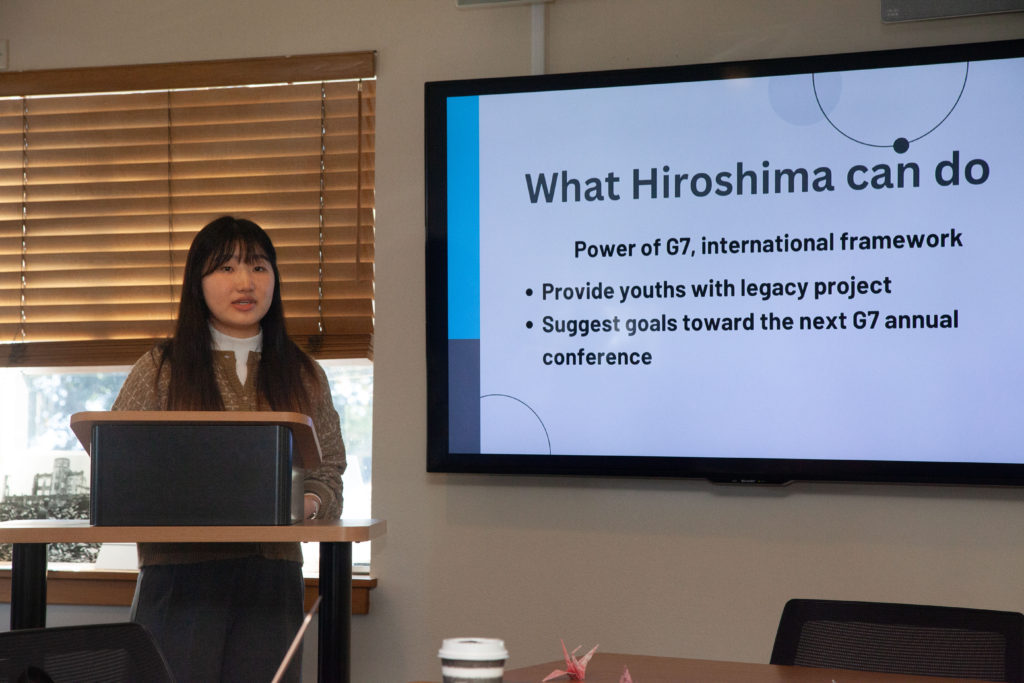
- In other prefectures, peace is seen in a broader sense, but the atomic bombings of Hiroshima and Nagasaki are studied simply as historical events, and nuclear issues are not handled as they are done in Hiroshima. We believe that Hiroshima’s role is to spread the nuclear disarmament education provided in Hiroshima.
- Furthermore, we think that Hiroshima can come up with recommendations for the next G7, whether they be from a youth legacy project inspired by the G7 Summit or a small community.
2. Panel Discussion
After the presentations from the caravan participants, a panel discussion was held with graduate students from the Middlebury Institute of International Studies at Monterey to have a deep discussion on nuclear disarmament.

(1) Achievements and Challenges of the G7 Hiroshima Summit and the Hiroshima Vision
[Main Discussion Points]
- It is regrettable that the Hiroshima Vision includes a statement that can be perceived as positive for the theory of nuclear deterrence, but I feel that it was good that the visits by the global leaders drew the world’s attention to Hiroshima.
- Considering that the G7 includes nuclear-weapon states and countries under the nuclear umbrella of the U.S., it is natural that the theory of nuclear deterrence is affirmed in the Hiroshima Vision. With a difficult situation continuing globally, the G7 countries released a document for nuclear disarmament, and I think that this is commendable and a starting point.
- I feel that the Hiroshima Vision lacks specificity in some aspects, but I think that this presents a step toward nuclear disarmament.
- The vision is commendable in that it clearly stipulates that the decline in nuclear arsenals must continue. At the same time, with only China, Russia, and North Korea named in the context of a step toward nuclear disarmament, there is no reference to other states with nuclear weapons and states with the ability to possess nuclear weapons, and this is regrettable.
- It is commendable that nuclear disarmament was discussed at the 7G Summit ahead of many other global issues to be discussed. It is necessary to take up the issue of nuclear disarmament as an even more important challenge.
(2) How to Coordinate the Group of Nuclear Deterrence and the Group of Nuclear Disarmament
[Main Discussion Points]
- In Hiroshima, many young people call for the abolition of nuclear weapons, but they are indifferent to the fact that Japan is under the nuclear umbrella or have little knowledge about nuclear deterrence. I believe that it is necessary to develop broader perspectives, such as those related to international politics and international relations, through education.
- Despite their ambitious nuclear policies, Brazil and Argentina signed the Treaty of Tlatelolco (Treaty for the Prohibition of Nuclear Weapons in Latin America and the Caribbean). This example suggests the importance of multilateral efforts. Moreover, it is important to provide education on the consequences of the use of nuclear weapons so that the education will remind people of the inhumanity of nuclear weapons and stop them short of using the weapons, even if they try to proceed with their nuclear policies.
- Many people in the U.S. feel that if Russia and China abolish their nuclear weapons, the U.S. can also abolish theirs. Even if it is difficult to eliminate nuclear weapons right away, I think that it is important to hold discussions toward realizing a world without nuclear weapons for a better future, regardless of the discussion’s scale or place. It is also important for non-nuclear-weapon states to engage in dialogue with nuclear-weapon states with the aim of reducing risks and preventing misuse. By having discussions again and again, even if they are small in scale, we can prepare for big changes, as we have done after the Cold War.
3.Lectures
The panel discussion was followed by lectures by professors and researchers from the Middlebury Institute of International Studies at Monterey and the James Martin Center for Nonproliferation Studies regarding nuclear disarmament and nonproliferation.
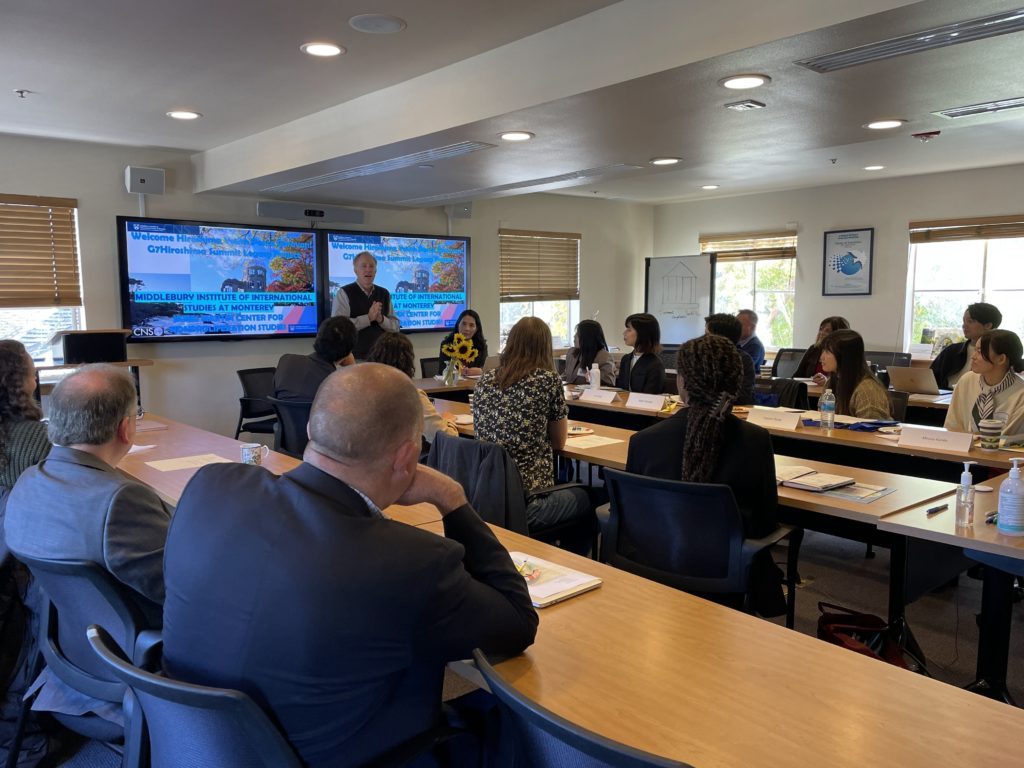
Professor Jeff Knopf, who conducts research on alternatives that do not rely on nuclear deterrence as a member of the Harvard University-MacArthur Foundation Beyond Nuclear Deterrence Working Group, gave a lecture on his current research on the risk of nuclear deterrence and the concept of danger.
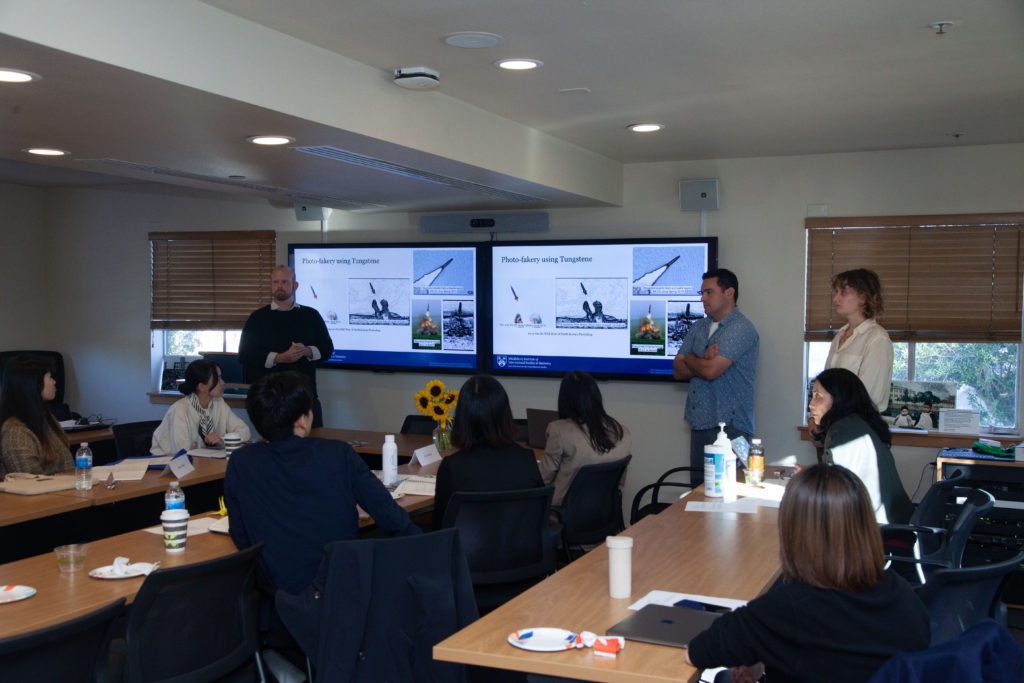
Professor Jeffrey Lewis and the New Tool team gave a presentation on the case in which they had noticed early signs of the Russian invasion of Ukraine based on information from satellites and social media.
4. Voices of Caravan Participants
- I’m glad that our presentations served as an opportunity for the audience to reconsider the threat of nuclear weapons.
- I felt that it is important to continue to work on issues involving complex factors without at least retreating.
- I think we had a realistic discussion on nuclear issues, including nuclear deterrence, from a perspective different from that of Hiroshima.
- The opinion that it is essential to think about the kind of world we want to achieve after the abolition of nuclear weapons has broadened my horizons.
- I’m interested in the presentation on the speculation of a military operation based on information from satellites and social media.
Tags associated with this article




-150x150.jpg)
